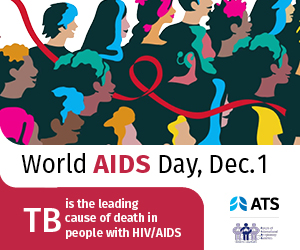The research, published January 9 in Eye is the first to demonstrate that two different types of deposits in the retina may contribute to early AMD, which can progress to advanced AMD and blindness. These two diseases could be diagnosed, studied, and treated separately with appropriate early intervention to prevent vision loss and other complications.
Age-related macular degeneration results from damage to the central area of the retina called the macula, which is responsible for reading and driving vision for driving Nearly 20 million Americans age 40 and older are living with some form of AMD, according to the Centers for Disease Control and Prevention. AMD in its early form is currently considered to be a single disease with cholesterol-containing deposits. These deposits are known as drusen and subretinal drusenoid deposits (SDDs). Early AMD may progress to blindness in two advanced forms, commonly called wet and dry AMD. The advanced dry form is also called geographic atrophy (GA) by eye specialists.
“An amazing fact is that the retina can generate a fluorescent light, similar to that of a light fixture, but a million times dimmer. For the first time, we were able to measure this dim light, called autofluorescence (AF), with ultra-sensitive detectors to study advanced AMD. We found it was consistently twice as bright in the patients with SDDs as those with drusen when they reached advanced AMD, and came from a unique diseased layer,” explains lead author R. Theodore Smith, MD, PhD, Professor of Ophthalmology at the Icahn School of Medicine at Mount Sinai. “Combined with our prior research, this provides conclusive evidence that two different disease processes in AMD are taking place, one with darker fluorescence and drusen, and one with brighter fluorescence and SDDs, and they need to be treated differently.”
Drusen formation can be slowed by appropriate vitamin supplements to prevent vision loss. Currently, there is no known treatment for SDDs, and they pose a greater threat of advanced AMD. However, in a recent previous study, Dr. Smith and a team of Mount Sinai researchers found that patients with SDDs are likely to have heart damage from heart failure and heart attacks, or advanced heart valve disease, or strokes associated with carotid artery disease.
“We think the SDDs result from deficient blood flow to the eye caused by these vascular diseases. We therefore believe that patients with SDDs should be warned they may have life-threatening undetected heart conditions that should be evaluated and treated. Further research needs to be done in women and disadvantaged groups where neglected heart disease is a serious issue. Eye scans for SDDs and routine cholesterol blood tests could address this. Additionally, treating the cardiovascular condition and restoring the eye’s blood supply may also help the SDDs. This work should prompt retinal specialists to look for both drusen and SDDs with optical coherence tomography (OCT), a standard retinal imaging technique, to best counsel patients.
The new research measured the autofluorescence and evaluated OCT scans in 18 patients (32 eyes) with advanced AMD and geographic atrophy (GA). Because GA can happen in multiple regions of the retina, investigators analyzed 52 GA regions overall. They also selected only patients who had OCT scans over the three previous years so they could determine whether the diseased regions started with drusen, SDDs, or both. 18 of these regions originated from drusen, 12 originated from SDDs, and 22 originated from mixtures of drusen and SDDs. The team then measured the brightness of the fluorescent light coming from these regions with a very sensitive light meter. They found it was twice as bright in patients with SDDs when compared to those with drusen. Specifically, the brightness readings averaged 72 in SDD subjects and 36 in drusen subjects, with values in the mixed group falling in between.
“All these numbers translate into one basic fact—there are two different diseases in AMD, one with drusen and one with SDDs,” says Dr. Smith. “The good news for patients and eye specialists is that in the clinic, we will not need advanced AF measurements to know which form of AMD the patient has. As our research showed, the two forms are associated with drusen and SDDs, and those deposits can be identified by standard retinal imaging. It therefore becomes important to diagnose which form of AMD the patient has for treatment and prevention of disease.”
This study was funded by a Regeneron Pharmaceuticals Investigator-Initiated Study, a Research to Prevent Blindness Challenge Grant, the Macula Foundation, a Bayer-Global Ophthalmology Award, and the International Council of Ophthalmology-Alcon Fellowship.
About the Mount Sinai Health System
Mount Sinai Health System is one of the largest academic medical systems in the New York metro area, with more than 43,000 employees working across eight hospitals, over 400 outpatient practices, nearly 300 labs, a school of nursing, and a leading school of medicine and graduate education. Mount Sinai advances health for all people, everywhere, by taking on the most complex health care challenges of our time—discovering and applying new scientific learning and knowledge; developing safer, more effective treatments; educating the next generation of medical leaders and innovators; and supporting local communities by delivering high-quality care to all who need it.
Through the integration of its hospitals, labs, and schools, Mount Sinai offers comprehensive health care solutions from birth through geriatrics, leveraging innovative approaches such as artificial intelligence and informatics while keeping patients’ medical and emotional needs at the center of all treatment. The Health System includes approximately 7,300 primary and specialty care physicians; 13 joint-venture outpatient surgery centers throughout the five boroughs of New York City, Westchester, Long Island, and Florida; and more than 30 affiliated community health centers. We are consistently ranked by U.S. News & World Report‘s Best Hospitals, receiving high “Honor Roll” status, and are highly ranked: No. 1 in Geriatrics and top 20 in Cardiology/Heart Surgery, Diabetes/Endocrinology, Gastroenterology/GI Surgery, Neurology/Neurosurgery, Orthopedics, Pulmonology/Lung Surgery, Rehabilitation, and Urology. New York Eye and Ear Infirmary of Mount Sinai is ranked No. 12 in Ophthalmology.
U.S. News & World Report’s “Best Children’s Hospitals” ranks Mount Sinai Kravis Children’s Hospital among the country’s best in several pediatric specialties. The Icahn School of Medicine at Mount Sinai is one of three medical schools that have earned distinction by multiple indicators: It is consistently ranked in the top 20 by U.S. News & World Report’s “Best Medical Schools,” aligned with a U.S. News & World Report “Honor Roll” Hospital, and top 20 in the nation for National Institutes of Health funding and top 5 in the nation for numerous basic and clinical research areas. Newsweek’s “World’s Best Smart Hospitals” ranks The Mount Sinai Hospital as No. 1 in New York City and in the top five globally, and Mount Sinai Morningside in the top 30 globally; Newsweek also ranks The Mount Sinai Hospital highly in 11 specialties in “World’s Best Specialized Hospitals,” and in “America’s Best Physical Rehabilitation Centers.”
For more information, visit https://www.mountsinai.org or find Mount Sinai on Facebook, Twitter and YouTube.



